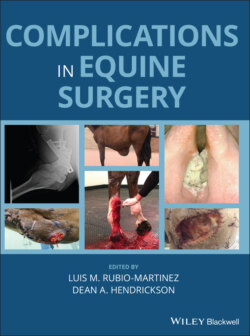Читать книгу Complications in Equine Surgery - Группа авторов - Страница 112
Transfusion‐Related Acute Lung Injury
ОглавлениеDefinition
Transfusion‐related acute lung injury (TRALI) is a new onset of bilateral pulmonary infiltrates within 6 hours of transfusion. TRALI follows the criteria for acute lung injury (ALI), defined as acute onset respiratory difficulty with evidence of pulmonary capillary leakage, no evidence of left atrial hypertension, and PaO2/FiO2 of less than 300 mmHg [12]. TRALI is an important cause of transfusion‐related mortality in humans. TRALI has been described in dogs but has not been reported in horses. Nonetheless, it is an important potential adverse reaction to consider and include in the list of differential diagnoses for dyspnea or hypoxemia after transfusion.
Risk Factors
Leukocyte antibodies in the donor may react with leukocyte antigens in the recipient, leading to sequestration and activation of neutrophils in lung tissue.
Activation of cytokines and lipids may also cause damage to the pulmonary vascular endothelium.
Activation of neutrophils related to infection, inflammation, or trauma may be the “first hit” prior to the “second hit” of the transfusion.
Pathogenesis
Activation of neutrophils (see above) leads to damage to the pulmonary capillary endothelium, with subsequent capillary leak. Priming of the neutrophils may occur from an initial event (e.g. trauma, surgery, infection). Activation of the neutrophils in the pulmonary endothelium then occurs secondary to transfusion‐related immune stimulation.
Prevention
Leukocyte antibodies in donor blood can be reduced by processing whole blood into packed RBCs and by washing RBCs.
Diagnosis
Clinical signs of TRALI include hypoxemia, cyanosis, tachypnea, and tachycardia, usually within 6 hours of transfusion. Volume overload, allergic reaction, and systemic inflammatory response syndrome should also be considered as differential diagnoses.
Treatment
Hypoxemic patients should be treated with supplemental oxygen. Conservative fluid therapy is indicated to reduce the risk of volume overload.
Expected outcome
TRALI is usually self‐limiting in humans, with recovery in 48 to 96 hours, although mortality is reported as high as 25% [13]. The incidence of TRALI in dogs appears to be low (3.7%) and not significantly different than the incidence of ALI in critically ill dogs that have not received transfusions [14].
